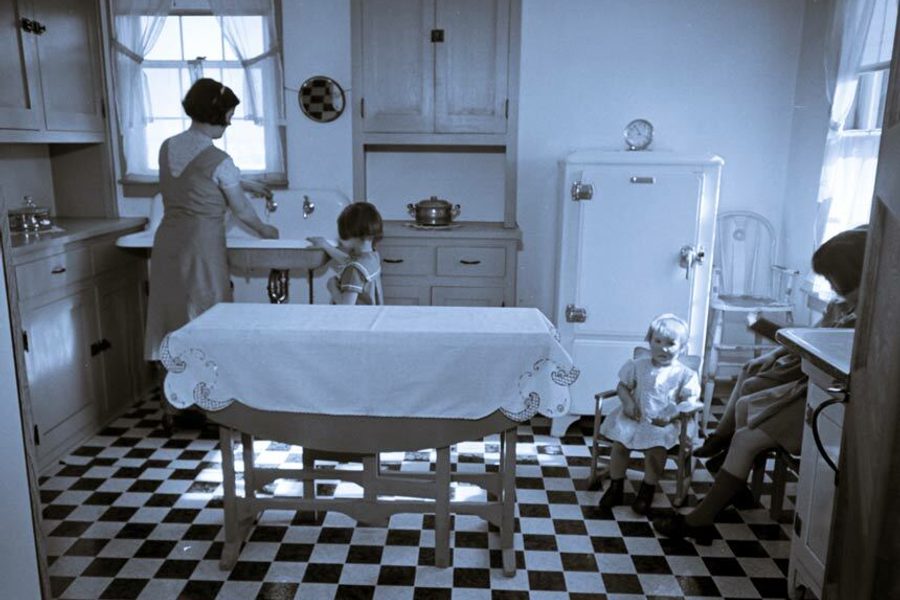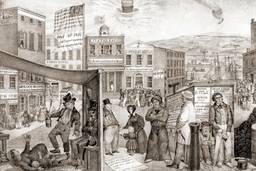How Today’s White Middle Class Was Made Possible By Welfare
Whites, angered at blacks and immigrants receiving “government handouts,” forget they were lifted out of poverty through racially exclusive welfare programs in the 30s.
Margaret Garb

Between 2001 and 2010, Westmoreland County, Pa., lost at least 8,000 manufacturing jobs. That’s one explanation for why this once-blue region gave more votes to Donald Trump than did any other Pennsylvania county, helping swing the state in his favor and propelling him to a surprise victory.
“We want our jobs back,” John Golomb, a retired steelworker in Westmoreland County and lifelong Democrat who voted for Trump, told the Wall Street Journal, adding that previous presidents from both parties “forgot us.”
A form of historical amnesia also afflicts Westmoreland County. Largely absent from discussions of its decline are the ambitious social welfare programs that once helped its residents climb out of poverty. Two generations ago, this area of rural Pennsylvania was the site of a sweeping — and successful — federal housing program. The New Deal subsistence homestead program, launched in 1933 with $25 million, built modern homes for low-wage industrial workers and gave them plots of land for subsistence farming. In this corner of coal country devastated by dangerous labor practices and low wages, federal officials constructed a new community that gave poor white families a stepping-stone to home ownership and the middle class. The story of this housing program is told by historians Timothy Kelly, Margaret Power and Michael Cary in Hope in Hard Times: Norvelt and the Struggle for Community During the Great Depression.
Norvelt, one of 34 communities in 18 states completed under the Roosevelt administration’s subsistence homestead program, remains today as a village of more than 1,000 residents in Westmoreland County. The median household income in Norvelt is more than $56,000, just above the state median. Fewer than three percent of residents live in poverty, a lower rate than any of the surrounding communities. It’s a monument to the potential for “an ambitious and innovative federal government” to “work positively in people’s lives,” the authors write. But it is also a reminder of the federal government’s inability — or refusal— to address the unyielding racial segregation in America’s housing markets. The authors can document just one African-American family living in Norvelt in the late 1930s, and the community is still largely white today.
Most of the community’s first residents were the children or grandchildren of immigrants from southern or eastern Europe and had lived in “coal patch” communities owned by Henry Clay Frick. The move to Norvelt could not have been more stark. The men had worked 10-to 12-hour days in Frick’s coal mines and coke ovens while residing in “patch” communities, in houses of four to six rooms owned by the mining company. Into the 1930s, families shared outhouses, carried water from a communal pump and heated their homes with coal stoves. Coal dust and contagious diseases spread from house to house, making the lives of wives and mothers a constant war against dirt, malnutrition and the diseases that put child mortality rates among the highest in the nation.
Norvelt’s houses, by contrast, had indoor bathrooms, kitchen sinks with running water, furnaces and electrical appliances, providing the miners and their families with middle-class living standards. They worked collectively in the hatchery and vegetable gardens, producing food for their households and subsidizing their low wages at the mines. By all accounts, Norvelt was a healthy, prosperous community. The town was named for Eleanor Roosevelt, a strong supporter of the federal program, who visited Westmoreland Homesteads on May 21, 1937. Roosevelt had taken the train from Washington to Greensburg, Pa., then insisted on driving herself the eight miles to the settlement, where she was greeted by a welcoming committee and given a three-hour tour. Following her visit, the residents of Westmoreland, grateful for the first lady’s support, renamed their community Norvelt.
The homestead experiment ended after WWII, when residents took ownership of their houses, incorporated their towns, and turned the cooperative farms into individually owned yards. A generation or two after the federal government built Norvelt and other homestead communities, many children and grandchildren of the original beneficiaries became Nixon’s silent majority or Trump’s Rust Belt whites, angered by what they perceived as government handouts to African Americans and immigrants. It’s an ugly irony that the book’s authors do not explain.
When most Americans think about public housing today, they picture the widely despised high-rise projects blamed for destroying black urban neighborhoods. This was federally funded housing for the urban working class, introduced under the 1937 Housing Act. Early public housing offered comfortable, modern apartments for both white and black families, but racial segregation was enforced. By the 1960s, high-rise public housing was underfunded, poorly maintained, and considered little more than a warehouse for the black urban poor.
Today, the federal government’s role in building and subsidizing the homestead communities — and the larger government programs to subsidize construction of white suburbs across the nation — is all but erased from history. This allows contemporary white Americans to assume they came by home ownership, and the family wealth it produces, through individual hard work. It also sustains their refusal to recognize the ways white privilege — or what W.E.B. Du Bois called “the wages of whiteness” — propelled white workers into middle-class economic stability.
Deindustrialization in the 1970s and 1980s — coupled with 40 years of stagnant wages and the 2008 housing crisis — have eroded the value of whiteness, though certainly not eliminated it. Eighty years after Norvelt, the right-wing elite plays on the anxiety of working-class whites who have lost some of the economic privileges that their grandparents took for granted.
The story of Norvelt reinforces the ways race and class are intricately bound together in American policy. Government support for housing the laboring poor was among the New Deal’s most innovative programs, one so effective that government’s role in building a nation of homeowners is now largely forgotten.
The success of New Deal homestead towns, in particular, reminds us that sweeping social welfare programs can benefit and win the support of the rural working class. But like so many New Deal programs, the homestead program was shot through with contradictions. It mixed idealism with opportunism, collective values with individualism, working-class uplift with racial exclusion. Ultimately, this helped to forge America’s massive racial wealth gap. It’s a piece of history worth recovering.








